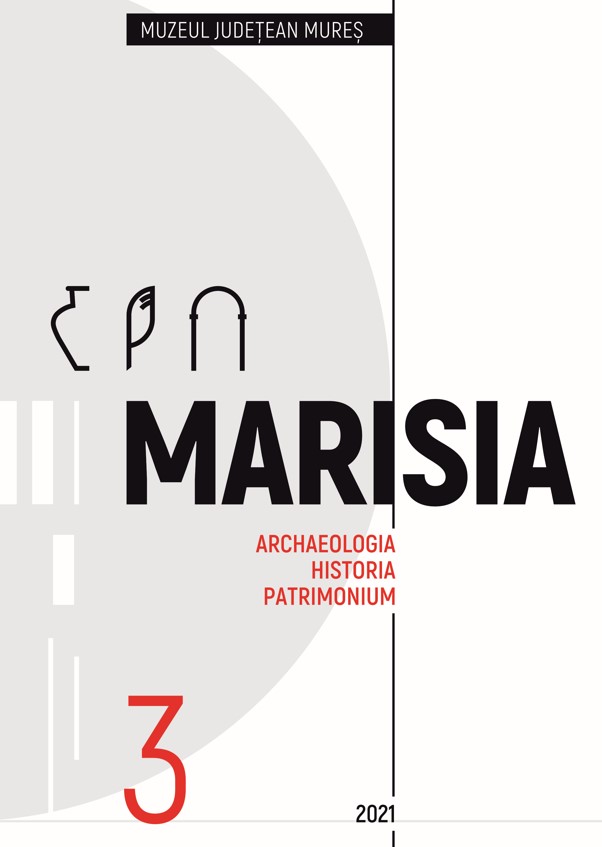LATE BRONZE AGE POTTERY DEPOSITS FROM THE SITE OF SÂNCRĂIENI / CSÍKSZENTKIRÁLY–KŐOLDAL (HARGHITA COUNTY, ROMANIA)
LATE BRONZE AGE POTTERY DEPOSITS FROM THE SITE OF SÂNCRĂIENI / CSÍKSZENTKIRÁLY–KŐOLDAL (HARGHITA COUNTY, ROMANIA)
Author(s): József Puskás, Lóránt DarvasSubject(s): Archaeology, Cultural history, Local History / Microhistory, Ancient World
Published by: Editura Mega Print SRL
Keywords: pottery deposit; Gava culture; Late Bronze Age; selective deposition; ritual deposition;
Summary/Abstract: During a rescue excavation near Sâncrăieni (Hungarian Csíkszentkirály, Harghita County, Romania) a pottery deposit was discovered. The feature was made of a large tripartite storage vessel placed into a pit. Several other objects were put inside the vessel, but a few ceramic fragments were also found below the vessel, in a burnt layer with a lot of charcoal. The objects inside the vessel were made of several fragments of one plate, fragments of four clay weights and of grinding stones. Based on analogies the vessel and the vessel fragments can be attributed to the Late Bronze Age Gáva culture, to its classical (Gáva II) phase, which in terms of Central-European chronology is the Ha A2-B1 period. The paper discusses the occurrence of tripartite vessels of the Gáva period. Similar vessels appear in various contexts: in burials (Reci–Telek), in pottery depositions (Reci–Telek, Sâncrăieni–Kőoldal) or in settlements in fragmented state (Reci–Telek, Cernat–Hegyes). For a better understanding of Gáva pottery deposits with selected objects we had to rely on a somewhat wider chronological span, like the period of the Suciu de Sus culture, the pre- respectively the proto-Gáva period. Selective depositions are mostly known from the begin-ning of the Late Bronze Age. The storage vessels sometimes occur alone, or associated with different objects. Many times the number of these objects differ to one place to another, but a main pattern of selection can be traced. The ritual activity, which led to the hiding of the vessels and other clay objects is hard to reconstruct. In everyday life these recipients could have been used for storage, fermentation or other purposes, but later received a role in ritual activities: as accessories for food or drink sacrifice and were not used anymore in everyday life.
Journal: Marisia. Archaeologia, Historia, Patrimonium
- Issue Year: 2021
- Issue No: 3
- Page Range: 51-78
- Page Count: 28
- Language: English

